The unchecked world of dodgy ads is making money for the big guys while leaving people angry and cheated on both sides. What’s going on, and can it be solved?
A conversation with a colleague the other day left me frustrated. Not because of anything they had said I had done, but more for what my site — this site — was apparently doing.
“You’ve got all those fake ads on your site, with Larry Emder [and] Richard Wilkins being arrested,” he said.
I groaned. I sighed. I reached out with a heave of frustration that could probably be felt as a shockwave of collective grief from other small publishers in the online world.
As an independent publisher, a few ads are necessary to keep the site running. I don’t run many, because I don’t want them to impact the reading experience, but they help keep the lights on. There’s hosting, software, domain costs, and let’s not forget the occasional cup of coffee for its owner, and that is largely what the ads provide.
None of this is new for a small publisher (or even a large one), and we all share the same frustrations, often paired with trying to navigate a raft of automated moderation practices Google has implemented in order to apparently make the web more helpful, but may have in fact done the opposite.
Running a website, and providing experience and expertise to readers isn’t easy at the best of times, but ads systems aren’t making it any easier. Most publishers are dealing with enough, and now we have to deal with managing and blocking dodgy ads, too.
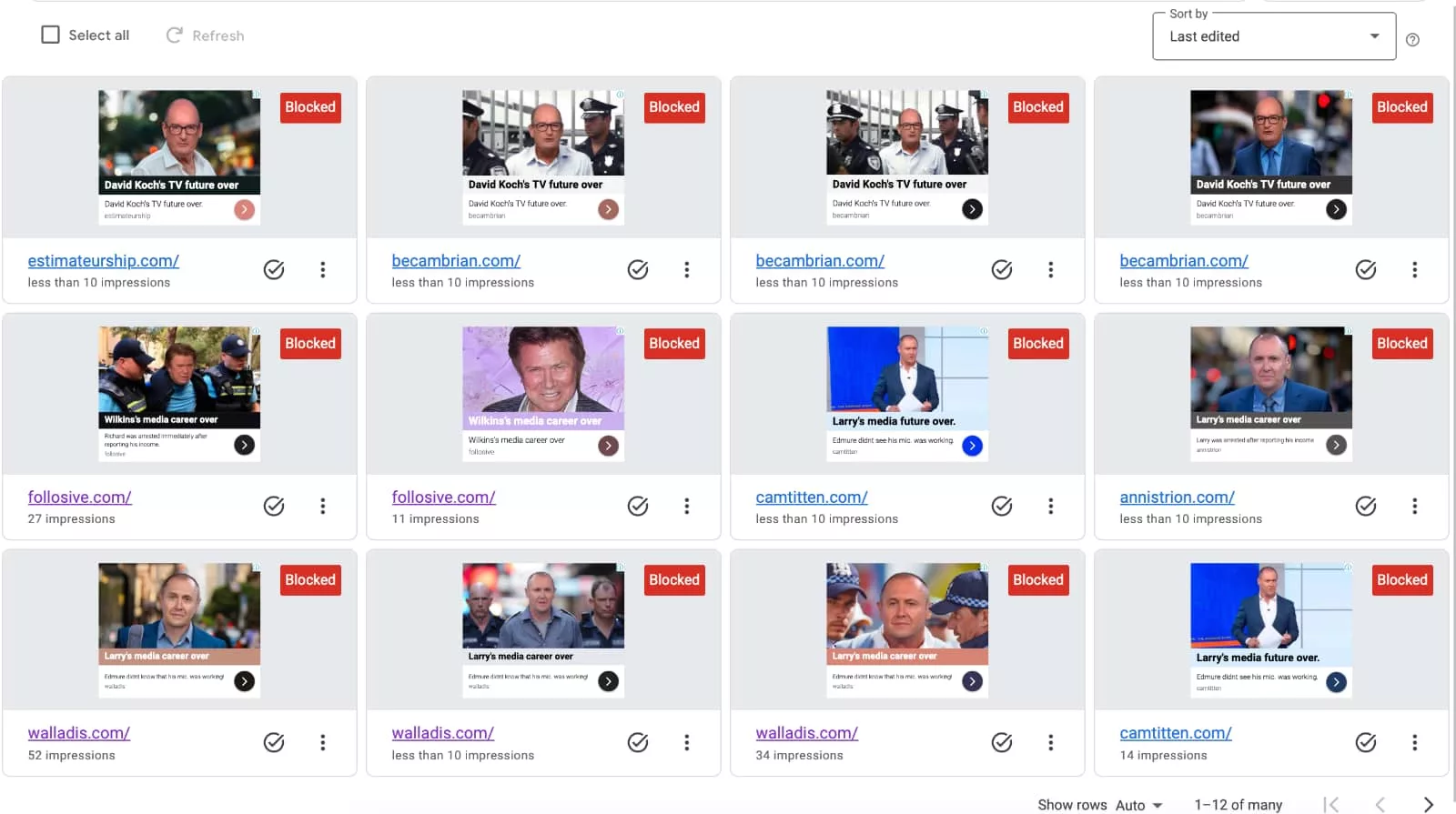
Fake promises from fake celebrities
Last year I spoke to a fake celebrity on Twitter, now X. I wasn’t tricked or scammed, and I know what signs to look for, but I don’t know if everyone was so lucky.
The fake celebrity didn’t sound like real one (we’ve met), and pressed me with urgency in Bitcoin investing. Urgency is one of the great indicators for a scam, giving you a sign that something is just not right.
Another time, a fake Bryan Dawe reached out to ask me to donate to a fake charity he had set up. When the real Bryan Dawe reached out to tell me he was grateful for me writing about this, I had no idea if he was in fact real. I still have no idea.
These aren’t the only affected individuals either.
In the past six months, Meta’s ads system has been lit up with another specific member of the known Australian community: Dr Karl Kruszelnicki. You probably know him as the science guy on ABC, and many Australians have grown up with him.
Frustratingly, they’re now seeing his face on fake ads on Facebook, and that’s a problem. Ads that do not represent him, but that the ads systems run without checking. Ads that are totally and entirely fake.
“People have been angry at me personally,” said Dr Karl in an interview with Pickr.
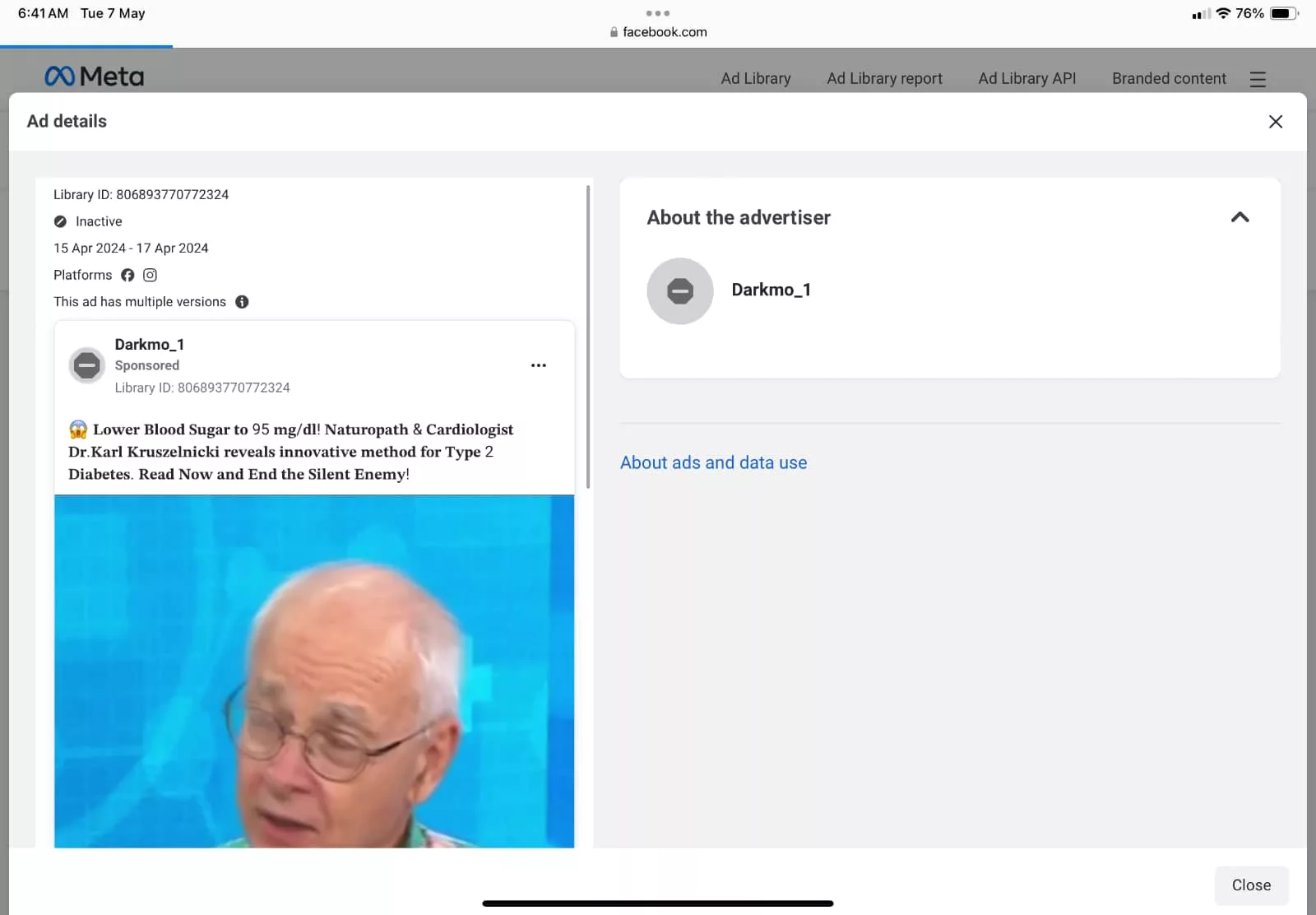
Fake ads clogging up online
Social scamming using celebrities isn’t a new phenomenon, and can be a real menace in the online world. At the time of the Bryan Dawe scam on Facebook, McAfee’s Head of Sales in Australia, Tyler McGee, told Pickr that scammers were getting more elaborate under the guise of celebrities.
They were even creating small armies of followers to help them drum up further victims without realising it, promising followers cash and gifts, and then stealing from those followers in exchange, asking for bank details accordingly.
“You never get paid, but they start to sell your bank details on the dark web,” said McGee at the time.
Those fake celebrities are frustrating in an online environment, largely because they’re interactive. They can lure you in and drop you deeper down the rabbit hole, but they’re not the only way to get conned.
Fake ads can also do it, and the online world has a real problem with them.
You’ve probably seen them before. Scam ads are populated with local celebrities from Australia, possibly because they’re more believable to be used as company spokespeople rather than bigger blockbuster names. They won’t so much have you talking to a person, but they can be just as believable if they say the right thing, and if they deliver deception.
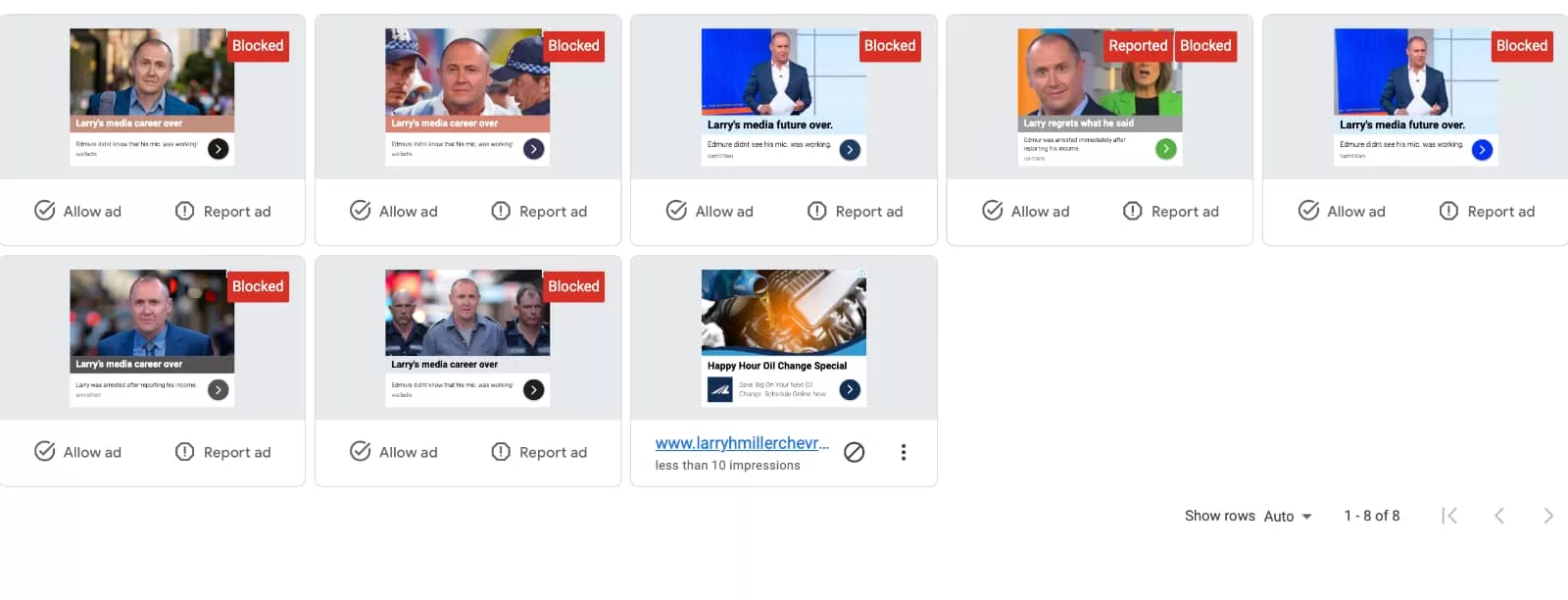
Consider the whole raft of ads featuring The Morning Show host Larry Emdur, using his likeness without permission, many of which are still running today. They talk about pills you can take for osteoporosis and arthritis, and try to claim legitimacy by linking to a supposed article on Nine’s website written by none other than fellow local celebrity and journalist Karl Stefanovic.
It’s a clever little rabbit hole — one TV personality having an article written about by another TV personality, both of which appear on a website that could plausibly report on these matters.
Except that all of this is a lie.

It’s not unlike a phishing scam, whereby users are tricked into going to a fake website to hand over their details.
The fake Nine website looks legit, and includes images of the product, complete with comments from so-called readers, but none of its navigational links work, and the site only looks fake if you know what to look for.
Sadly, most people do not. The only links that do work are the ones taking you deeper in the rabbit hole, sending you to a transaction page to buy these dodgy pills. If they weren’t dodgy, why would its seller have to go through this level of deception to make a sale?
Dodgy pills for a dodgy ad
It’s next to impossible to police the web and get scam sites taken down.
There are just too many fake websites going up, and no way to technically monitor all of them. Outside of the odd hosting term and condition — few of which are typically enforced — a site owner can do what they want with their space, and often will. Hosting rules differ from country to country, and there may be even less interference if you host from somewhere that only cares about the money.
But there is a place that should be able to police our doorway to these dodgy websites: the ad platforms that house the links to them in the first place.
The problem is largely that scammers are paying for these ads, and the websites that run these ads seem to be happily taking the money for them. Meta and Google seem to be running plenty, at least from our own research, and we suspect they may not be alone.
In the Emdur example above, we found the ad in an active state on Meta’s network during the time this story was written, complete with the link to the fake Nine website. Google clearly runs ads for fake Larry, so much that we needed to moderate their appearance on our site, as well. Most of those links go to really unusual international websites, but it doesn’t change the fact that the ads can still be damaging.
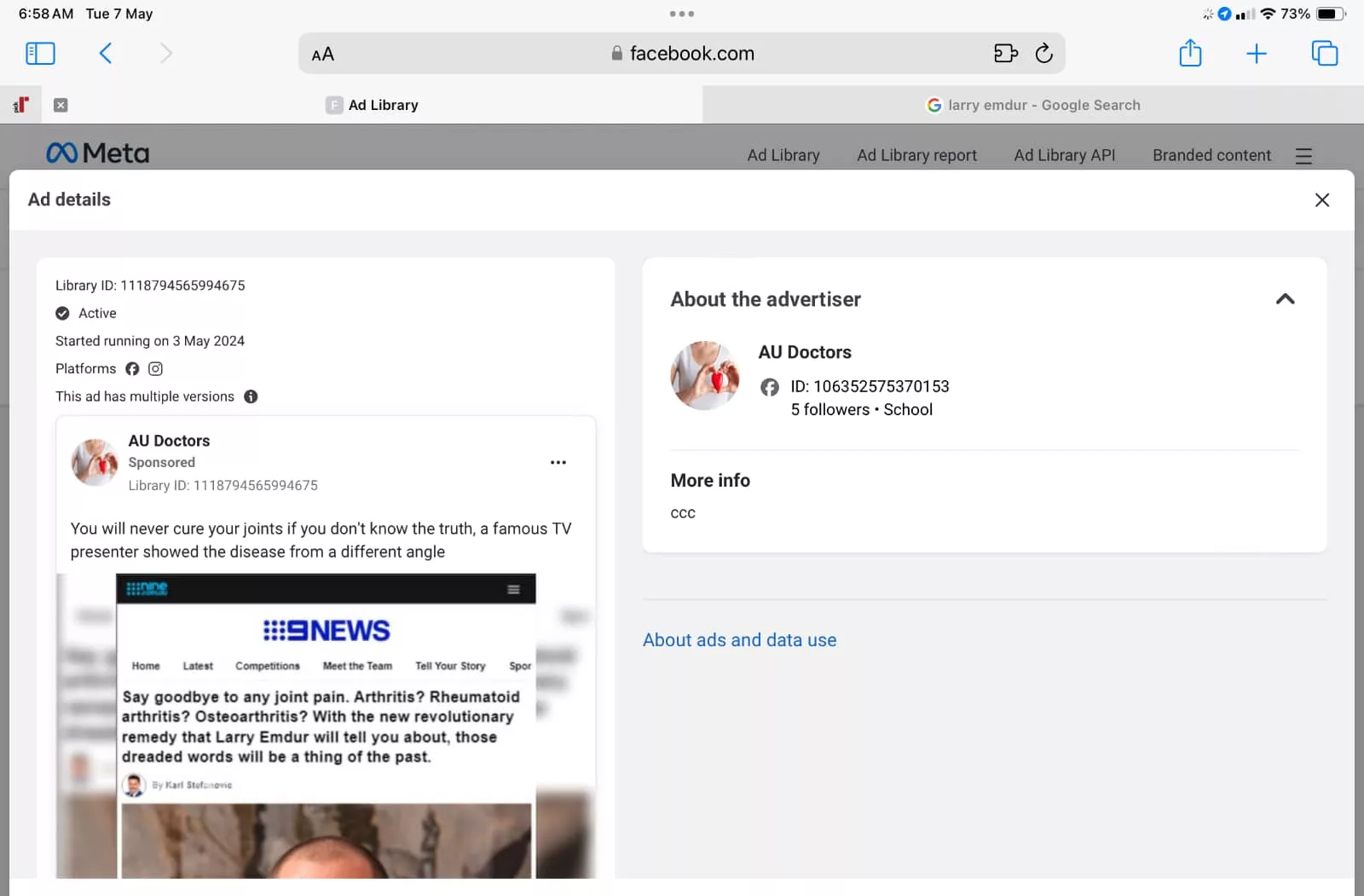
A few cease and desist orders from either Larry Emdur or Nine would probably clean that up quickly, but they’ll also likely return just as quickly as they disappear. Frustratingly, they seem to force the onus of moderation on the victims, whether that’s the targeted celebrity or those who were scammed.
And that is currently the problem, with neither ad platform appearing to take responsibility for the ads it runs.
Despite being able to approve ads on its system, something likely using automation via artificial intelligence, the platforms seem content with taking money without any obvious due diligence. Fortunately, that is something the government looks keen on changing.
A new mandatory code set by the government could target these sorts of practices, and place the penalties squarely at the feet of ads giants, making it their responsibility to ensure ads have been checked.
This comes in the wake of serious scams that have affected the wallets of many Australians, including misleading celebrity crypto scams and fake investment scams taking people for a ride, all to the collective tune of hundreds of millions of dollars each year.
Ads like these are generated using AI image generators making them seem more believable, while the technology powering AI video and AI sound can also impress upon audiences that the ads are legitimate by deep faking the real counterparts.
Real people, real victims
It’s not just a fake Larry you’re seeing on your screen, but a whole raft of people. A fake Richard Wilkins was found in our list of moderated ads on Google’s AdSense, but we also found plenty of Dr. Karl Kruszelnicki ads on Meta, all searchable from Meta’s Ad Library.
You can actually find them yourself, and Meta is approving many of them, though some have been taken down.
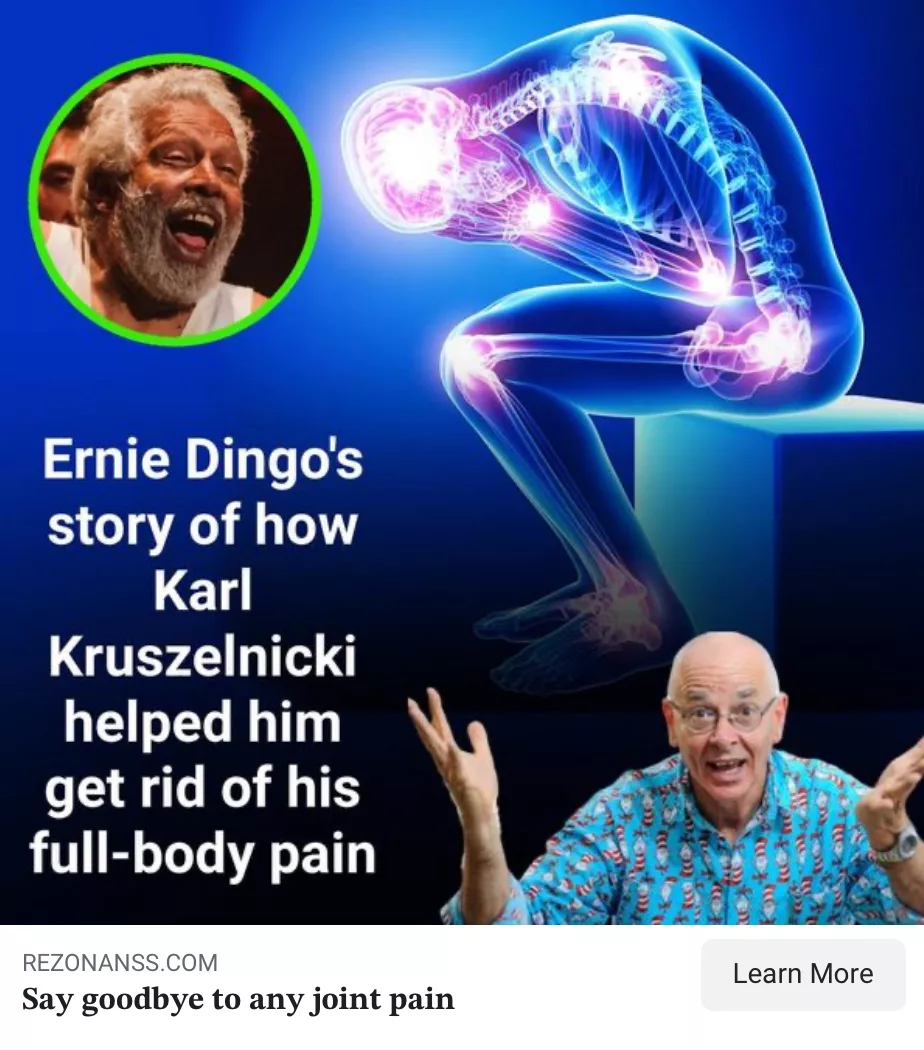
David Koch has spoken out about these scams before and they still persist, some of which can still be found on Meta’s Ad Library with a simple search.
The impact on both parties is measurable. Victims of the scam ads waste money on products that may or may not work, and in the end potentially hand over bank and card details to organisations engaging in deceptive conduct.
“The main impact [to me] is sorrow for the people who have been ripped off,” said Dr. Karl Kruszelnicki, with the anger and frustration clear in his voice.
He told Pickr that listeners and readers who have trusted his name for years have found their way to these scammy products only to be ripped off and charged more thanks to tiny print and bad products.
“These are people who have trusted me, and they see the ads and they think, ‘I’ve got this osteoarthritis or this tinnitus’ or this or that. People say ‘I ordered the product and it never came’, or they get the product and it doesn’t work,” he said.
“It just fills me with so, so much sadness that people have been have been ripped off.”
Meanwhile, people used as the scam spokesperson can have their reputations tarnished and blame unwittingly thrown their way. At the same time, they’re often left to track the ads being run in their name, and mop up the damage.
Money for nothing
The reputational drama is something Dr. Karl has also had to deal with, who has left notes on his social followings to say he doesn’t endorse any commercial products, a note which may not even be seen in the journey of an ad user. We suspect he’s not alone.
As it is, Dr. Karl’s team files complaints and takedown requests weekly, sometimes to the tune of 100 complaints a day to have illegitimate ads removed. The ads are deliberately deceptive and often contain copyrighted material, repurposing faces and images without permission, and yet ad platforms continue putting them online and running them.
“We’ve contacted Facebook [and] Meta, and told them this, and their response has always been the same response: they meet our advertising standards,” he said.
What those advertising standards are, Meta didn’t say. It has a specific page about advertising transparency, and even notes that “ads must not contain content that asserts or implies personal attributes“, but stops short of mentioning whether an ad could be used in the guise of someone else without their signed and expressed permission.
Specifically, Meta notes that its “policies prohibit ads promoting products, services or offers using deceptive or misleading practices, including those means to scam people out of money or personal information”.
“Scammers present a challenge in many environments, including social media, and they are constantly finding new ways to deceive people,” a spokesperson for Meta told Pickr.
“Meta adopts a multi-faceted approach to tackle scams. We use both technology, such as new machine learning techniques, and specially trained reviewers to identify and action content and accounts that violate our policies,” they said.
“In the final quarter of 2023, we removed 691 million fake accounts globally. We partner with local organisations to educate consumers to spot and avoid scams and bring enforcement action against scammers.”
While the reduction of nearly 700 million fake accounts is no small task, people are still being scammed out of money for products that have hidden conditions to charge increased costs and don’t work in the first place.
And unfortunately, that’s exactly what the company is running.
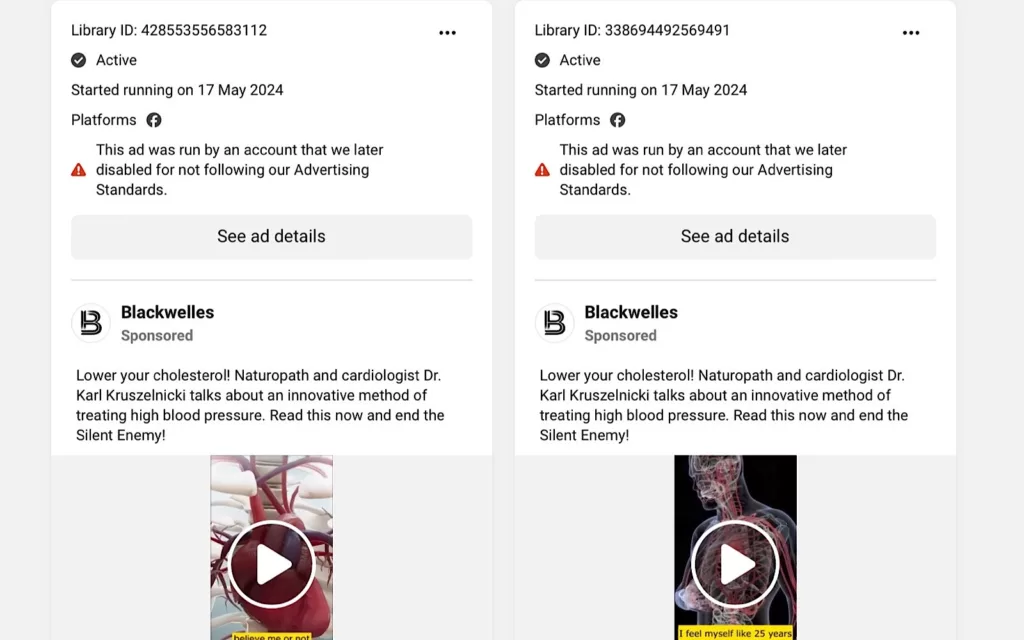
In the few days before this article was published, some of those fake Dr. Karl ads were still running. A day before it went live, Meta switched them off due to a violation from not following its advertising standards.
They were running for roughly three to four days until that happened, which is no small amount of time to ensnare the general public.
As if to add insult to injury, the day this article was published (May 22), three more scam ads running Dr. Karl’s face appeared, complete with a note that they started running on May 20. The cycle continues.

It’s a similar situation with Google, which notes that it has policies to deal with misleading ads, telling Pickr that:
“Google has strict policies that govern the kind of ads that we allow on our platform, and ads that intend to mislead or deceive users are a violation of those policies. When we find ads that violate our policies, we will remove them.”
Google spokesperson
And yet, those ads remain. Worse, they become incumbent on website owners to police their presence and regular website users to work out whether they’re real or not.
What needs to be done
As it is, the ads system of each of the major companies makes a tremendous amount of money. Google ad revenue was reportedly $237.86 billion US dollars in 2023, with the final quarter of the year amounting to $US65.52 billion of that.
Not all of this will be from fraudulent ads, but some clearly is, and Meta has a similar problem, with around $5 billion AUD expected from its local efforts from a total of $US36.2 billion across the board.
Fixing the scammy ads would likely be a small drop in the ocean of spending for any ad platform, and should not come at the expense of either victim.
“Under the Australian Consumer Law (ACL), businesses cannot mislead or deceive consumers,” a spokesperson for the Australian Competition and Consumer Commission (ACCC) told Pickr.
“Social media platforms are also responsible for identifying, monitoring and removing fake celebrity advertisements appearing on their platforms,” they said.
“If a platform is aware that it is displaying a fake celebrity advertisement, but does not take sufficient steps to address the issue, that platform may also be liable for misleading or deceptive conduct under the ACL.”
By that logic, Meta and Google may already be liable. If an ad system was running due diligence, this sort of thing would be less likely to occur. Instead, it’s always happening. Throw a local celebrity name into Meta’s Ad Library, and you’re bound to find one being used as an honorary spokesperson unwittingly. It’s madness.
Online ads platforms should be held responsible for checking whether an ad is legitimate or not. They’re making the money from the ads, so they should be able to check whether an ad is legitimate in the first place. It’s as simple as that.
And that is as simple as it needs to be.
However, right now the onus of responsibility is on the customer, the personality, and the audience accidentally finding their way into the jaws of deceit.
Hopefully not for too much longer, but it may mean approaching every ad you see with a perpetual grain of salt, at least until some responsibility becomes a requirement on the part of big ads platforms.






